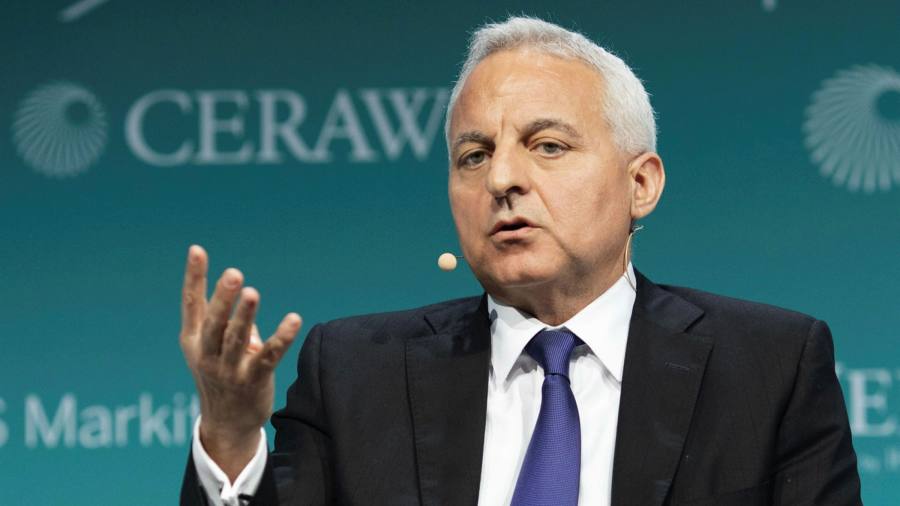[ad_1]
Rolls-Royce has chosen a BP veteran and private equity partner as its next chief executive to help steer the company back to financial health and navigate the energy transition.
The FTSE 100 engineering group, whose engines power wide-body planes used for long-haul flights, said on Tuesday that Tufan Erginbilgic would take over from Warren East in January.
Erginbilgic, 62, a dual Turkish and UK citizen, spent more than 20 years at BP, including five in its executive team. He was head of the refining and marketing division at the oil company, where insiders credit him with reviving the business and improving its profitability. He also spearheaded BP’s investments in electric vehicle charging but left in 2020 after being passed over for the top job.
He is currently a partner at Global Infrastructure Partners, a private equity firm that focuses on large-scale investments in infrastructure businesses.
Erginbilgic told the Financial Times that he had received lots of CEO offers, but that Rolls-Royce was “different for me”.
“It is a global brand, very innovative, one of the biggest engineering companies in the world,” he said.
Rolls-Royce, he added, “has the opportunity to take the whole business to low carbon”.
Rolls-Royce has been looking for a new chief since February when East announced he would leave the group at the end of the year.
The coronavirus pandemic led to the grounding of most of the world’s airline fleet and hit Rolls-Royce hard. In 2020 it embarked on a sweeping restructuring plan to cut 9,000 jobs and had to shore up its balance sheet with £7.3bn of new equity and debt.
By choosing Erginbilgic, Rolls-Royce has continued its practice of going outside the organisation to fill its top management positions — East was chief executive of chipmaker Arm Holdings before joining.
The aero-engine group has previously drawn on BP executives to fill its board positions. Former chair Sir Ian Davis was a non-executive at the oil group. Iain Conn, a former head of BP’s downstream division, was also on the board of Rolls-Royce.
Rolls-Royce chair Anita Frew told the Financial Times in an interview last month that she did not consider aerospace experience a must for a new chief executive. The chosen candidate should be “someone who is used to a big global complex industrial business”, she said. “I don’t think it has to be aerospace. The board doesn’t think it has to be aerospace.”
The relatively unknown Erginbilgic will need to steer Rolls-Royce back to full financial health and navigate the threat that decarbonisation poses to a business built on engines powered by oil products. Under East, the company has invested in electric aircraft and small modular nuclear reactors.
Analysts at Deutsche Bank said the news was “neutral to positive” for the group because it clarified the leadership situation. While Erginbilgic had “limited aerospace experience, he appears to be a seasoned industry professional with extensive experience in delivering strong improvement in profitability”, they added.
Rolls-Royce shares, which have fallen 27 per cent since the start of the year, closed the day up 1.5 per cent at 93p.
Erginbilgic will receive a base salary of £1.25mn, 30 per cent of which will be paid as shares deferred for two years. He will also receive £3.75mn in shares as a golden hello to reflect “compensation he will forgo as a result of leaving GIP”, the company said. The shares are due to vest in two tranches in 2027 and 2028.
Frew on Tuesday said Erginbilgic was a “proven leader of winning teams within complex multinational organisations, with an ability to drive a high-performance culture and deliver results for investors”.
“He has extensive strategic and operational experience and a firm understanding of safety-critical industries, including aerospace, as well as the challenges and commercial opportunities presented by the drive for low-carbon technologies,” she added.
[ad_2]
Image and article originally from www.ft.com. Read the original article here.

